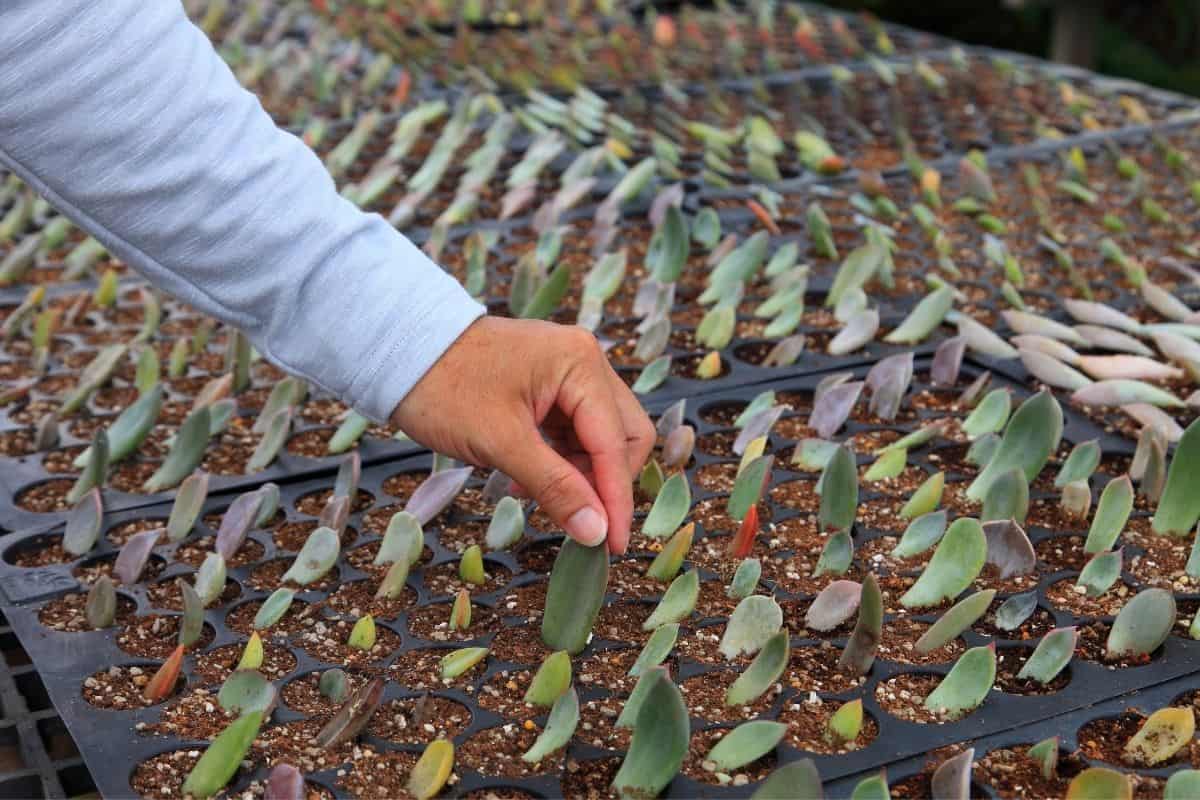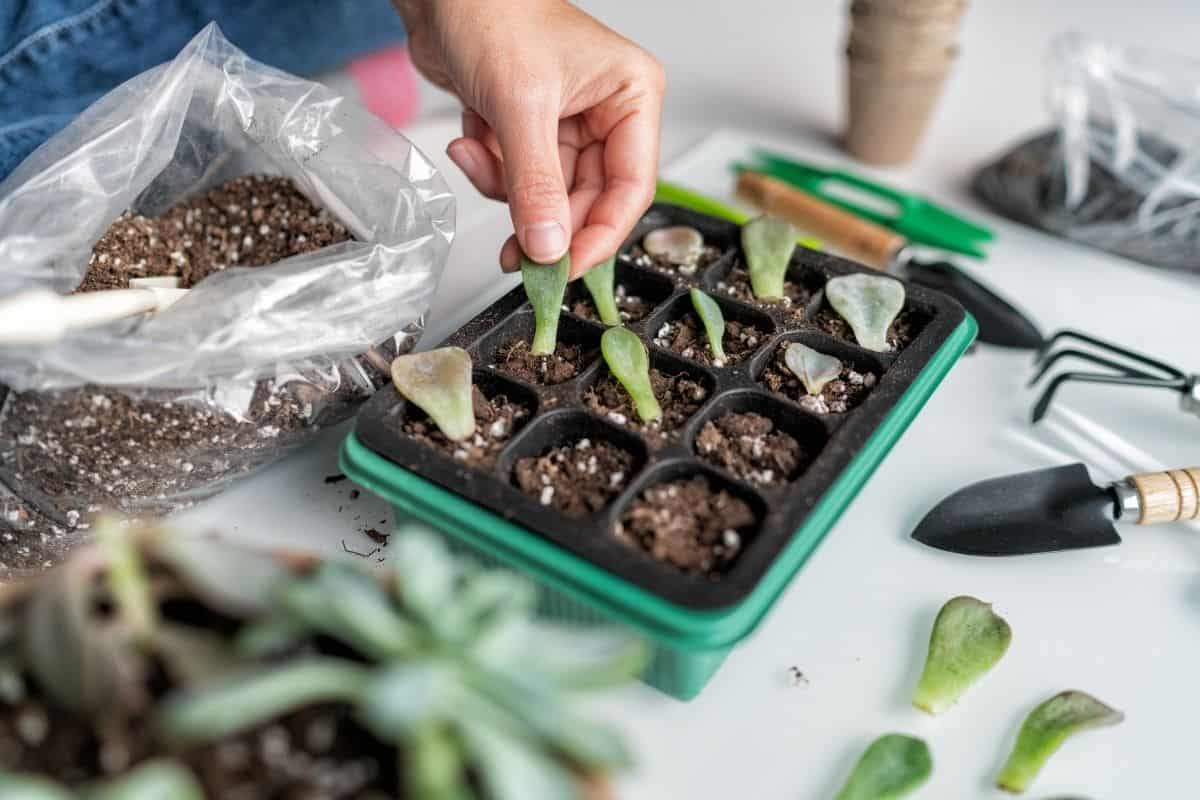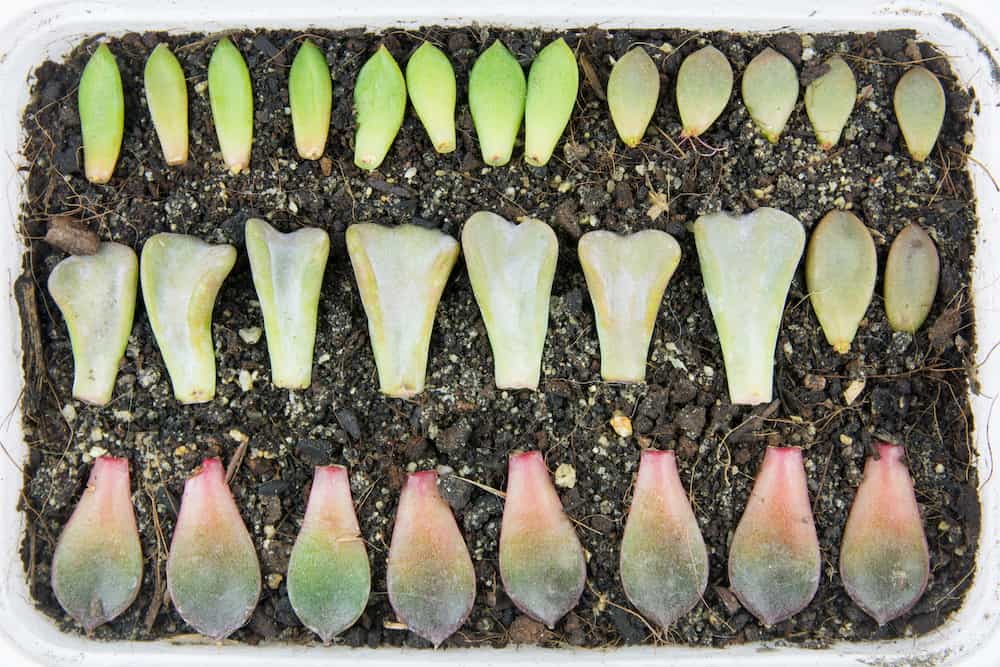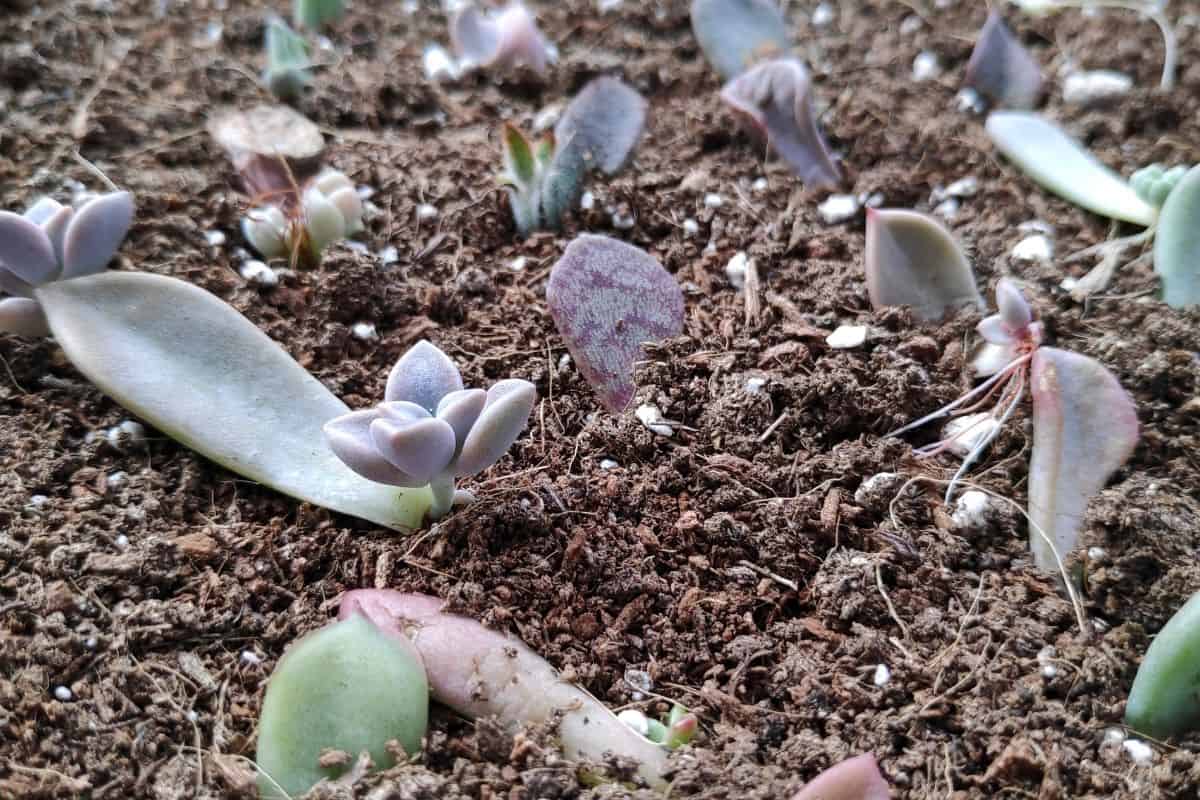
Succulents are probably the best plants you could have in your home. Not only are they beautiful, but they also don’t need that much maintenance. For this reason, many aspiring green thumbs are inclined to grow their succulent collection.
Aside from buying new plants, one way to grow your collection is to propagate your succulents. There are plenty of things to consider to ensure the survival of your propagated succulents, but the most important one is watering. If you don’t know how often to water propagated succulents, you’ve come to the right place.
Jump to:
- How Often to Water Propagated Succulents
- Why Your Propagated Succulents Are Dying
- Overwatering
- Inappropriate Sun Exposure
- The Parent Leaf
- Broken Leaves
- Young Leaves
- Over- or Underwatered Leaves
- Do All Succulents Need the Same Amount of Water?
- Factors to Consider When Watering Succulents
- Type of Succulent
- The Season
- Container Size
- Amount of Light
- Growing Your Succulent Collection
How Often to Water Propagated Succulents
As you may already know, most succulents do not need too much water. They often grow in hot and dry regions, so they are efficient in storing water.
However, that is not the case for the young ones. Since propagated succulents do not have roots yet, they are not very effective in collecting water.
Try to observe the temperature in the location of your plants. If it’s particularly hotter, be sure to water your succulents four times a week. On the other hand, watering them two to three times a week should suffice if the humidity levels are a bit higher.
Why Your Propagated Succulents Are Dying
Your succulents are pretty fragile during the first few weeks after propagation. Hence, you will have to be extra careful when attending to them.
If you noticed that your propagated succulents die quickly, you might be doing a few things wrong. Here are some of the most common reasons that may explain that.
Overwatering
All plants, even succulents, collect water from their roots. When you propagate a succulent, it might not have grown roots yet.
Some people think propagating from the roots will alleviate this problem. The problem is, the succulent doesn’t have too many leaves yet to deliver the water. As a result, a lot of propagated succulents die from overwatering.
Make sure that you reduce the amount of water you give them. On the other hand, this is not to say that you should let them dry out.
The best thing you can do is to keep the soil moist all the time through misting. Don’t sprinkle or drip too much water that you’d see it standing on the soil. Overwatering can quickly attract parasites and cause the propagated succulents to rot.
Inappropriate Sun Exposure

Succulents thrive in hot and dry environments, so plenty of direct sunlight should be good, right? Well, that may not be the case for propagated succulents.
These plants can only survive the hot weather conditions in their natural habitat because their roots supply water to the leaves. Then again, a propagated succulent has not fully matured yet. As such, too much sun exposure will easily burn or dry them out.
Nonetheless, they still need the energy from the sun. Place them in a spot where they get indirect sunlight and plenty of air. Doing this will help with photosynthesis without overheating them.
No products found.
On the other hand, if you noticed that your succulent does not show any new growth after a few days, try bringing it a little closer to the sunlight.
The Parent Leaf
One of the most critical parts of propagating a succulent is choosing the parent leaf. You will want to make sure that your plant is healthy before picking out the parent leaf.
To do this, make sure that you water the plant properly over the next couple of days or weeks. When the time comes that you have to choose the parent leaf, avoid the following.
Broken Leaves
It would be challenging, if not impossible, for you to grow a new plant if the parent leaf is broken. Be sure to remove the leaf as cleanly as possible from the plant to avoid damage.
Young Leaves
It is possible to grow a new succulent using a young leaf. However, it’s not advisable. Young leaves have not fully matured yet, so they don’t have sufficient minerals and nutrients to encourage new growth.
Over- or Underwatered Leaves
An over- or underwatered leaf cannot survive even when it’s still attached to the plant. This makes no difference if you try to propagate it.

Do All Succulents Need the Same Amount of Water?
You probably have this idea that all succulents do not need much water because of their natural habitat. In truth, not all succulents are the same.
Succulents are generally described as plants that efficiently store water in their leaves, roots, and stems. While most of them use this technique to survive the desert, it’s not the case for others.
Some succulents grow in rainforests, which means they have an abundant supply of water. Hence, they store most of it in their leaves.
Taking care of succulents often found in rainforests means you have to provide them with water continuously. This is unlike the succulents that grow in deserts, which you only need to water once a week. If you want your succulents to grow properly, make sure that you research their needs before watering.
Factors to Consider When Watering Succulents
Once your succulents have started growing, the next thing you need to think of is how much water you should give them. You don’t want to overwater, but at the same time, they shouldn’t dry out.
There are a few factors you need to consider when watering your succulents. Keeping these in mind will help you figure out whether they need little or additional water.
Type of Succulent
The first thing you need to consider is the type of succulents you have. As mentioned earlier, some succulents grow in rainforests, while others thrive in deserts.
In other words, some succulents will need plenty of water and others not so much. Make sure that you have a constant water supply for rainforest succulents. On the other hand, you need to guarantee that you don’t leave your desert succulents with damp soil for extended periods.
The Season

The spring and the summer seasons are the most active times for your succulents. You will notice remarkable growth in your plants during these periods.
For this reason, you might need to give them extra water to keep up with their production of new leaves, stems, roots, or even flowers. During the summer and spring seasons, make sure that you water your succulents three times every week.
On the other hand, winter is the cruelest weather for your succulents. During these cold months, providing them with more water will do them more harm than good. You may probably need to water them twice over the entire period.
Container Size
You may think that since the container is bigger, you will need to water it more. While true for some plants, that’s not the case for all succulents. These plants are great at sucking up the moisture in their surroundings.
Larger containers mean more soil, and more soil means more material that can hold moisture. Because of this, you don’t have to water succulents in large containers quite frequently. Instead, they will get the nutrients they need from the damp soil.
On the other hand, smaller containers dry out quicker. Watering succulents in smaller containers more frequently should help them grow faster.
Amount of Light
Succulents need sunlight for photosynthesis. Unfortunately, the heat from the sun can also dry them out. This means that the plants you place under the sun for long hours should also receive more water.
Growing Your Succulent Collection
Growing your succulent collection is one of the best things you can do during this season. However, propagating plants is not always as easy as it sounds.
Before you proceed with that idea, make sure you know how often to water propagated succulents to keep them from dying. Once they start growing, understanding their water supply needs should also be a priority.

